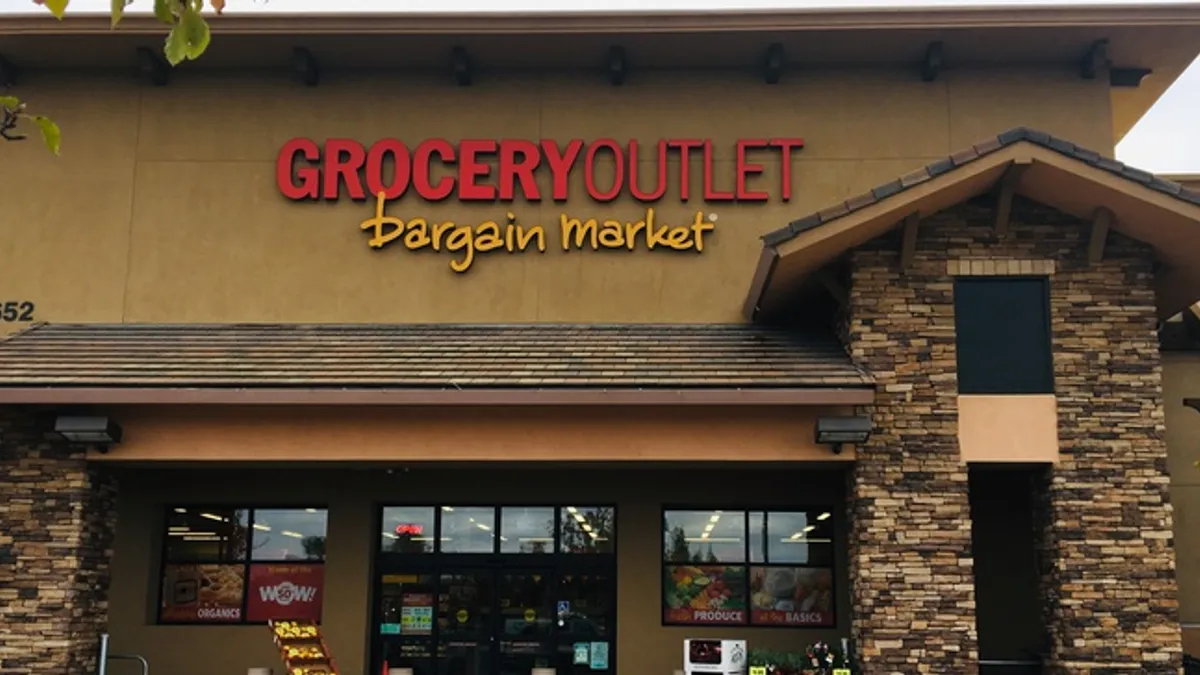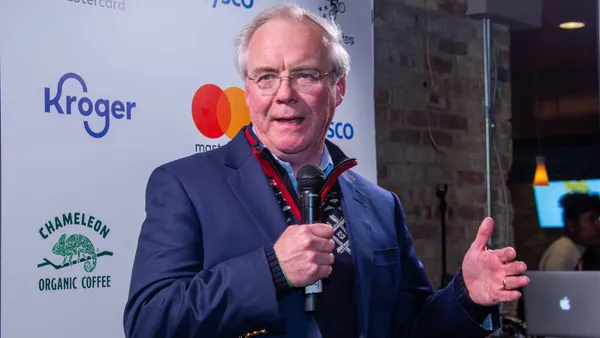Dive Brief:
- Grocery Outlet announced Tuesday its president, RJ Sheedy, will take on the CEO role at the start of next year while also continuing in his current role.
- CEO Eric Lindberg will transition to the role of chairman of the company’s board. The leadership changes go into effect Jan. 1, 2023.
- The announcement came just hours before the company’s reported earnings for its third-quarter, during which the discounter saw a 19.4% net sales increase, to $918.2 million, and comp sales lift of 15.4%.
Dive Insight:
After nearly four years in the top role, Lindberg is handing the CEO reigns over to Sheedy.
Sheedy joined Grocery Outlet in 2012 and has held leadership roles overseeing purchasing, marketing, supply chain and strategy. Sheedy has served as the company’s president since 2019.
Lindberg, who joined Grocery Outlet in 1996 and rose through the company’s ranks, was named CEO at the end of 2018. Lindberg told investors on the Tuesday earnings call that the transition of the CEO role to Sheedy was the culmination of careful planning.
As part of the leadership shuffle, Sheedy will join the company’s board and the current board chairman, Erik D. Ragatz, will take on the role of lead independent director.
Ragatz said in a statement that Grocery Outlet has achieved “remarkable success” under Lindberg’s leadership and is well-positioned for continued growth.
“As President, RJ has been instrumental in that success and in guiding the company's long-term strategic vision. RJ is a respected leader throughout the company, and we are confident that he is the best person to lead Grocery Outlet through this exciting next phase of growth,” Ragatz said.
Executives told investors on the earnings call that they are “pleased” with the discounter’s outperformance during Q3. For the quarter, which ended Oct. 1, Grocery Outlet saw net income increase by 2.1% to $17.5 million, and adjusted EBITDA increase by 15.0% to $59.1 million.
“Traffic and spending from our core customers are up, indicating stronger retention within an expanding share of wallet,” Sheedy told investors. “We are also gaining new customers as shoppers increasingly seek out value. In addition, overall satisfaction among both our core and tertiary customers remains strong.”
Sheedy also said that consumer awareness of and intent to shop at Grocery Outlet over the next 12 months has increased an unspecified percentage.
As the discounter heads into the holiday season, executives told investors they feel confident about the company’s inventory positioning. The discounter added roughly 150 items during the past quarter, Sheedy said, noting the company is testing grab-and-go items and continuing to see its NOSH (natural, organic, specialty and healthy items) assortment drive growth.
On the e-commerce front, the company’s app, which will allow for more personalized offerings and more customer data, is rolling out for testing in Washington state and Grocery Outlet’s tie-ups with Instacart, DoorDash and Uber Eats are leading to more incremental sales, Sheedy noted.
During the quarter, the company opened six new stores, bringing its store fleet count to 431 locations across California, Washington, Oregon, Pennsylvania, Idaho, Nevada, New Jersey and Maryland. East Coast stores are getting a “lot of traction” as the brand gains more consumer awareness, executives told investors.
The company plans to have 26 net new stores for fiscal 2022 — two fewer stores than originally expected. While Grocery Outlet is seeing store openings getting delayed, Lindberg told investors Grocery Outlet is still pursuing 10% annual unit growth.
The company raised its fiscal 2022 outlet for several key metrics. For net sales, the company is expecting roughly $3.55 billion, up from the $3.46 billion-$3.48 billion range it previously forecasted. Grocery Outlet is predicting its comp sales will increase about 11%, compared to the prior 8%-8.5% expectation, and that its adjusted EBITDA will be about $224 million, up from the $218 million-$223 million range.
The revised guidance lowers the company’s forecasted gross margin from approximately 30.6% to 30.5%.
“Our foundation is strong, and we continue to invest in support of our growth initiatives in order to drive long-term shareholder value,” Chief Financial Officer Charles Bracher said.












